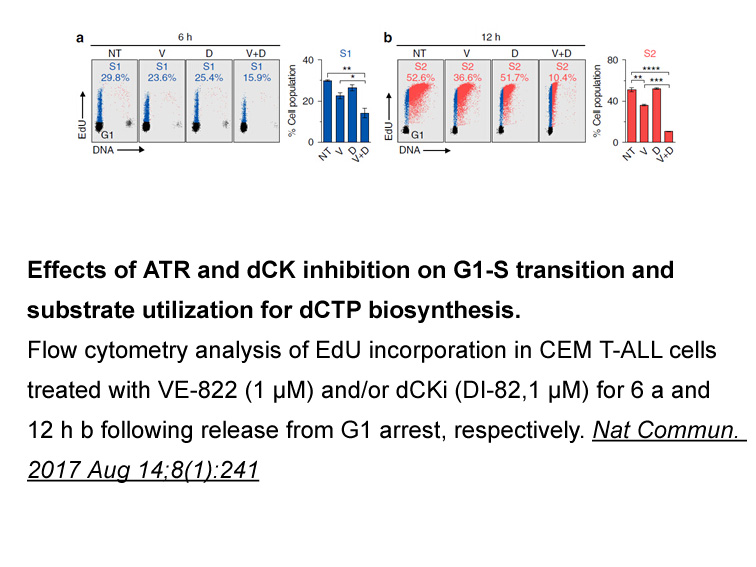Archives
In a previous study we firstly
In a previous study, we firstly uncovered the crucial role of NFAT5 in the development of autoimmune disease by demonstrating that NFAT5-deficient mice showed a marked Bafetinib of antibody-induced arthritis (Yoon et al., 2011). Moreover, we have demonstrated that NFAT5 is highly expressed in the synovia of RA patients and regulates synoviocyte proliferation and angiogenesis (the so-called pannus formation), the pathologic hallmark of RA (Yoon et al., 2011). We also identifi ed a significant decrease in the incidence of TLR-induced chronic arthritis in NFAT5 haplo-insufficient mice as compared to their wild-type littermates (Kim et al., 2014). Taken together, our previous results strongly suggest that NFAT5 is crucial in RA pathogenesis and should be further studied for the development of RA treatment. Despite the pivotal role of NFAT5 in the pathogenesis of cancer and arthritis (Kuper et al., 2014; Jauliac et al., 2002; Yoon et al., 2011; Kim et al., 2014), specific drugs that inhibit NFAT5 activity, especially those selectively targeting the inflammatory effects of NFAT5, are currently unavailable.
Conventional disease-modifying anti-rheumatic drugs (DMARDs) must be discontinued within the second year in two-thirds of RA patients due to drug toxicity or therapy-independent relapse (Smolen and Aletaha, 2015; van der Kooij et al., 2007). Thus, new therapeutic agents with different modes of action are required for optimal treatment of RA. In the present study, we attempted to identify NFAT5 inhibitors with this in mind. Using high-throughput screening (HTS), >40,000 compounds were screened with a cell-based inhibition assay for the induction of nitric oxide (NO), a target of NFAT5. We validated the anti-NFAT5 activity of the primary hit compounds using an NFAT5-specific reporter and identified novel NFAT5 suppressors, KRN2 and its derivative KRN5, the latter of which exhibits high oral bioavailability and metabolic stability. KRN2 reduced the expression of inflammatory NFAT5-target genes, including Nos2, Il6, Tnf, and Csf2, in TLR4-stimulated RAW 264.7 macrophages. We also found that the suppressive effect of KRN2 on NFAT5 expression was mediated through inhibition of NF-κB p65 binding to the promoter region of the Nfat5 gene. Interestingly, high salt-induced NFAT5 and its target genes, including Ar, Bgt and Smit, were unaffected by KRN2. Finally, using in vivo models of chronic arthritis, we showed that KRN2 and KRN5 ameliorated arthritis severity, decreasing proinflammatory cytokine production. Therefore, KRN2 and KRN5 demonstrate potential of NFAT5 inhibitors as possible therapeutic agents to treat chronic inflammatory arthritis, including RA.
ed a significant decrease in the incidence of TLR-induced chronic arthritis in NFAT5 haplo-insufficient mice as compared to their wild-type littermates (Kim et al., 2014). Taken together, our previous results strongly suggest that NFAT5 is crucial in RA pathogenesis and should be further studied for the development of RA treatment. Despite the pivotal role of NFAT5 in the pathogenesis of cancer and arthritis (Kuper et al., 2014; Jauliac et al., 2002; Yoon et al., 2011; Kim et al., 2014), specific drugs that inhibit NFAT5 activity, especially those selectively targeting the inflammatory effects of NFAT5, are currently unavailable.
Conventional disease-modifying anti-rheumatic drugs (DMARDs) must be discontinued within the second year in two-thirds of RA patients due to drug toxicity or therapy-independent relapse (Smolen and Aletaha, 2015; van der Kooij et al., 2007). Thus, new therapeutic agents with different modes of action are required for optimal treatment of RA. In the present study, we attempted to identify NFAT5 inhibitors with this in mind. Using high-throughput screening (HTS), >40,000 compounds were screened with a cell-based inhibition assay for the induction of nitric oxide (NO), a target of NFAT5. We validated the anti-NFAT5 activity of the primary hit compounds using an NFAT5-specific reporter and identified novel NFAT5 suppressors, KRN2 and its derivative KRN5, the latter of which exhibits high oral bioavailability and metabolic stability. KRN2 reduced the expression of inflammatory NFAT5-target genes, including Nos2, Il6, Tnf, and Csf2, in TLR4-stimulated RAW 264.7 macrophages. We also found that the suppressive effect of KRN2 on NFAT5 expression was mediated through inhibition of NF-κB p65 binding to the promoter region of the Nfat5 gene. Interestingly, high salt-induced NFAT5 and its target genes, including Ar, Bgt and Smit, were unaffected by KRN2. Finally, using in vivo models of chronic arthritis, we showed that KRN2 and KRN5 ameliorated arthritis severity, decreasing proinflammatory cytokine production. Therefore, KRN2 and KRN5 demonstrate potential of NFAT5 inhibitors as possible therapeutic agents to treat chronic inflammatory arthritis, including RA.
Materials and Methods
Results
Discussion
NFAT5 has been implicated in autoimmune responses and disease states. A recently growing body of research indicates that NFAT5 activity is regulated by either osmotic or pro-inflammatory stress in a context-dependent manner (Kim et al., 2013), suggesting a link between adaptation to hyperosmolarity and immune response. Lymphoid tissues are hyperosmolar compared with blood (Go et al., 2004). Indeed, NFAT5 has a critical role in regulating proliferation and inflammatory responses of macrophages and T lymphocytes, key cellular components of innate and adaptive immunity, respectively (Go et al., 2004; Buxadé et al., 2012; Kim et al., 2013; Lopez-Rodriguez et al., 2001). Elevation of sodium chloride to 40–80mM, which is similar to the levels found in the interstitium of animals on a high salt diet, promotes the differentiation of CD4+ T cells into Th17 cells, important actors in autoimmune diseases, and enhances production of pathogenic Th17 cytokines and chemokines (Kleinewietfeld et al., 2013; Wu et al., 2013). Furthermore, genetic haplo-insufficiency of NFAT5 expression results in surprisingly dramatic suppression of arthritis severity (Yoon et al., 2011), which makes NFAT5 an attractive therapeutic target of RA.